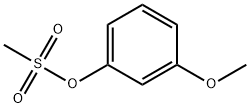Pentafluorobenzenesulfonylfluorescein , ≥98% , 728912-45-6
CAS NO.:728912-45-6
Empirical Formula: C26H11F5O7S
Molecular Weight: 562.42
MDL number: MFCD08062167
| Pack Size | Price | Stock | Quantity |
| 1mg | RMB372.00 | In Stock |
|
| 5mg | RMB1749.60 | In Stock |
|
| 10mg | RMB3104.80 | In Stock |
|
| 25mg | RMB6789.60 | In Stock |
|
| others | Enquire |
PRODUCT Properties
| storage temp. | Store at -20°C |
| solubility | DMF: 30 mg/ml; DMSO: 30 mg/ml; DMSO:PBS (pH 7.2)(1:1): .25 mg/ml; Ethanol: 20 mg/ml |
| form | A crystalline solid |
| color | Light yellow to yellow |
Description and Uses
Reactive oxygen species (ROS) play important roles in the initiation and progression of many disease processes. Most fluorescent probes for ROS detection, such as 2,7-
Pentafluorobenzenesulfonyl fluorescein is a H2O2-selective sensor that can be used to detect H2O2 levels in cells. Pentafluorobenzenesulfonyl fluorescein is normally non-fluorescent but fluoresces upon perhydrolysis of the sulfonyl linkage by H2O2[1].


